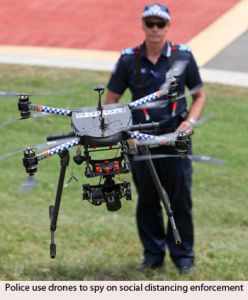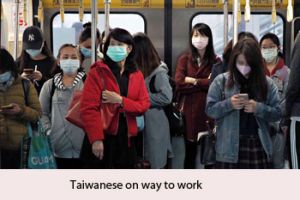 How with some government commonsense most people could soon return to an (almost) normal lifestyle
How with some government commonsense most people could soon return to an (almost) normal lifestyle
The Australian government’s extremist response to the coronavirus, based on advice from its medical experts, including the Chief Medical Officer, has stemmed the spread of the virus, but at what cost?
Is the cure worse than the disease?
We should not accept medical advice as the sole source of truth. Doctors have a laser-like focus on medical issues and have little or no knowledge of, the social or economic consequences of their advice.
It is good practice for leaders to consult expert advice. But good leaders will then evaluate that advice in light of their wider knowledge of all the surrounding facts before coming to a decision, which may be to accept all, some or none of the advice.
Other, perhaps more qualified, medical experts have different views to Australia’s chief medical officers.
Dr John Ionnidis, is a professor of medicine, of epidemiology and population health, of biomedical data science, and of statistics at Stanford University in California. He has pioneered the field of meta-research and is co-director of the Meta-Research Innovation Center at Stanford University. When discussing the death rate for Covid-19, Professor Ionnidis authoritatively stated:
“Reported case fatality rates, like the official 3.4 per cent rate from the World Health Organisation (“WHO”), cause horror and are meaningless. The real rate, adjusted from wide age range, could be as low as 0.05 per cent and as high as one per cent.”
The 3.4 per cent mortality rate reported by the WHO only tells us about how many who died had been confirmed to have contracted Covid-19. However, nothing is said about the many others who never became sick enough to get tested. The magazine Science reports that 86 per cent of infections are never documented. This would mean that the mortality rate for Covid-19 is more in line with what Dr Ionnidis reports.
Some other expert medical opinions:
Dr Sucharit Bhakdi, microbiologist and infectious disease epidemiologist, formerly of Mainz University Germany: “All these measures are leading to self-destruction and collective suicide based on nothing but a spook.”
Dr Joel Kettner, Professor of Community Health Sciences and Surgery, Manitoba University, Canada: “I’ve seen pandemics, one every year. It is called influenza, and other respiratory illness viruses. I’ve never seen this reaction, and I’m trying to understand why.”
Dr David Katz, founding director of the Yale University Prevention Research Centre: “I am deeply concerned that the social, economic and public health consequences of this near-total meltdown of normal life will be long-lasting and calamitous, possibly graver than the direct toll of the virus itself … The unemployment, impoverishment and despair likely to result will be public health scourges of the first order.”
Michael T Osterholm, director of the Centre for Infectious Disease Research and Policy, University of Minnesota, USA: “The best alternative (to a shutdown) will probably entail letting those at low risk for serious disease continue to work, while advising higher-risk individuals to protect themselves through physical distancing. With this battle plan we could gradually build up immunity without destroying the financial structure on which are lives are based.”
In the attempts to ‘flatten the curve’ the government is actually flattening the economy with potentially catastrophic consequences.
Hundreds of thousands are being thrown out of work. Small businesses are being destroyed, many will never recover. Inevitably, job losses will lead to more homelessness, more financial pressures leading to a higher suicide rate, marriage breakdown and to a dramatic growth in crime, which always increases in times of economic crisis
 With implementation of the latest draconian medical advice most of the population is now under virtual house arrest.
With implementation of the latest draconian medical advice most of the population is now under virtual house arrest.
The federal government has so far allocated a gargantuan 320 billion dollars to deal with the crisis.
The bureaucrats advising governments about the current responses to COVID-19 will not lose their jobs in this crisis.
The extremist government actions have at least curtailed the spread of the virus. Now would be a good time to refocus and look for a better course of action going forward.
Our responsibility to future generations only strengthens the case for caution. The greater the collapse in economic activity, the more crippling will be the burden on future generations, both in terms of increased public debt and decreased economic activity.
Whichever course of action is taken people will die. But people are dying all the time from a variety of causes. At the time of writing, 30 Australians have died from the effects of corona virus since mid January. At the rate of 4,200 deaths per year (Australian Bureau of Statistics), 700 people have died from influenza and pneumonia in the same period.
The experts tell us the virus will not abate until the majority of the population have been exposed and built up an immunity to it or a vaccine has been developed.
We can proceed in one of two ways.
We can continue to follow medical advice to “flatten the curve” and make the pain drag on for a year or two while destroying the economy, or we can isolate the vulnerable and the infected, and immediately restart the economy and our lives.
 Taiwan is a good example of the latter course. With a population of 23 million crammed onto a small mountainous island, it had only 363 virus cases with just 5 deaths as at April 5, while still achieving a relatively high level of economic activity.
Taiwan is a good example of the latter course. With a population of 23 million crammed onto a small mountainous island, it had only 363 virus cases with just 5 deaths as at April 5, while still achieving a relatively high level of economic activity.
The Taiwan government acted swiftly and decisively at the beginning of the outbreak. It was the first country to ban flights from Wuhan. It quickly set up rigorous testing, isolation and tracking regimes. It banned the export of medical equipment and subsidised the price of face masks. Now most Taiwanese wear face masks as they go about their activities. There is widespread temperature checking.
 Parents temperature check their children and send the results to school before the children arrive. Most Taiwanese schoolchildren wear face masks at school, only taking them off to eat lunch. They sit behind partitions made of corrugated board.
Parents temperature check their children and send the results to school before the children arrive. Most Taiwanese schoolchildren wear face masks at school, only taking them off to eat lunch. They sit behind partitions made of corrugated board.
Where to from here?
The most beneficial option, in my opinion, is a four-pronged approach:
All the statistics show the most vulnerable are those aged seventy and over with serious or life-threatening medical conditions. This group has by far the highest fatality rate. I believe that all deaths so far have been in this group.
Firstly, all persons aged seventy and over to remain in lockdown under the current regime until the pandemic is declared at an end or until they can produce a letter from their doctor stating they are not suffering from a life-threatening illness and they have no serious respiratory problems.
During lockdown the vulnerable elderly should be kept separate from the rest of the community, even their relatives. Those not in nursing homes can be moved into hotel accommodation modified for the purpose, complete with medical facilities. Replace physical visits with video conferencing to help then stay in touch with friends and family.
Secondly, all other persons should be immediately released from house arrest to go back to work to earn an income to feed their families and pay the mortgage. However, they will still need to take sensible precautions such as social distancing. Workplaces can reopen, including bars and restaurants, again while heeding social distancing. Supermarket checkouts and reception areas could be fitted with screens to protect their staff. The government can direct some of the already allocated billions into the private sector to kick-start it.
I am over seventy by the way, and I am comfortable with this if allows the rest of the population to resume a normal life after all the trauma and disruption to their lives.
Thirdly, place all people testing positive in enforced and monitored isolation in hotel accommodation as well. After isolating the infected, their movements should be tracked and all those in recent contact should also be isolated.
And fourthly take immediate action to start repairing the budget and hence the burden on future generations. There are many government agencies and programs that can be culled.
Cancelling the contract to build submarines that may be outdated before they are launched could save upwards of 80 billion dollars. They could be replaced, when the economy stabilises, at a fraction of the cost by entering into an agreement with the US to buy or hire modern, proven vessels such as the nuclear powered Virginia class submarines.